
hotline:
17715390137
Tel/Wechat:
18101240246 (Technology)
0512-68565571
Email:mxenes@163.com (Sales Engineer)bkxc.bonnie@gmail.com
Scan the code to follow or search the official account on WeChat:
2D Materials Fronrier After paying attention,
click on the lower right corner to contact us,
Enter enterprise WeChat.
Professional Services Online

North Konami can provide MXene (can be customized)
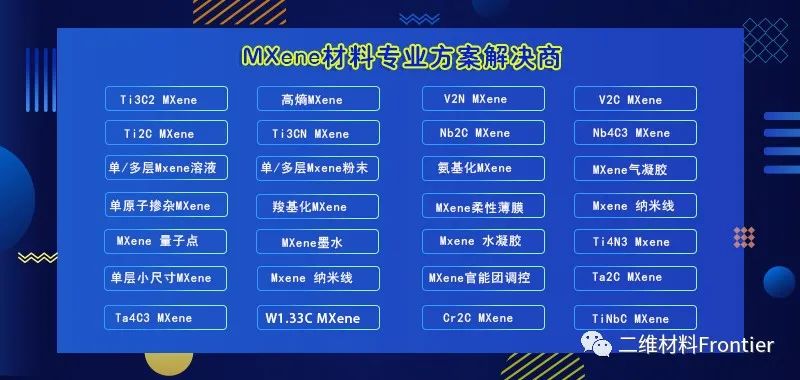
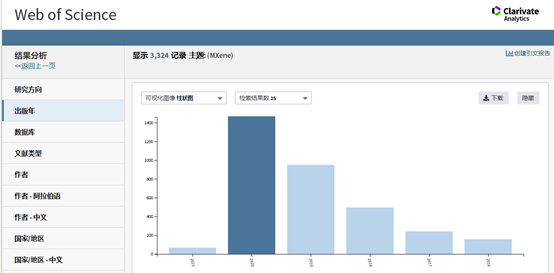
In 2020, which is destined to be extraordinary, MXenes research has achieved leapfrog development. According to data from Web of Science, the number of MXenes-related research papers published in 2020 has reached 1,458. Considering the impact of the COVID-19 epidemic on scientific research The impact of the work, compared with the publication volume of 941 papers in 2019, it is not easy to achieve such a result. Today, let us take you to take stock of the representative work in MXenes research in 2020.
Climb to the top of Science/Nature

Argonne National Laboratory and Professor Dmitri V. Talapin of the University of Chicago published a research paper titled: Covalent surface modifications and superconductivity of two-dimensional metal carbide MXenes in the top international academic journal Science. A general strategy for the manipulation of functional groups on MXene surfaces by performing substitution and elimination reactions. MXenes with O, NH, S, Cl, Se, Br, and Te surface functional groups, as well as MXenes without any surface functional groups, were successfully synthesized. These as-prepared MXenes have some unique structural and electronic properties. Surface functional groups can control the interatomic distances in the MXene lattice, and Tin+1Cn (n = 1, 2) with Te2- ligands produces a huge plane-extended lattice (>18%) compared to the TiC lattice.

The research group of Prof. Shubin Yang from Beihang University and Prof. Pulickel M. Ajayan of Rice University jointly published a research paper entitled: Conversion of non-van der Waals solids to 2D transition-metal chalcogenides in the top international academic journal Nature, the article reported A topological transformation method was developed to convert van der Waals solids into 2D van der Waals transition metal chalcogenides with 2H/1T phases. This transformation is achieved by exposing the non-van der Waals solid to chalcogen vapor, which can be controlled by controlling the entropy and vapor pressure of the reaction products. Heteroatom-substituted transition metal chalcogenides (such as yttrium and phosphorus) can also be prepared in this way. Therefore, the phase-selective 2D transition metal chalcogenides obtained by this general method can be obtained at high temperature (1373 Kelvin) has good stability, and at the same time, it can realize the large-scale preparation of single-layer materials, which has far-reaching significance for the development of single-layer two-dimensional materials.
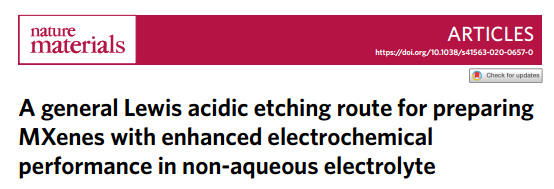
Prof. Huang Qing from Ningbo Institute of Materials Science, Chinese Academy of Sciences, Prof. Patrice Simon from University of Toulouse, France, and Prof. Lin Zifeng from Sichuan University published the title of "A general Lewisacidic etching route for preparing MXenes with enhanced electrochemical performance in non-aqueous electrolyte" in the top international academic journal Nature Materials. paper. Different from the traditional method, this paper proposes a method to prepare MXenes by selective etching of A in the MAX phase of non-traditional A element using Lewis acid molten salt, and the corresponding verification is carried out. The Ti3C2 MXene etched by this method has a reversible capacity of 738C g-1 (205 mAh g-1) and a high Coulombic efficiency when applied to lithium storage.
The internationally renowned academic journal Advanced Functional Materials even launched seven review articles of MXenes in different research fields at the same time. Let us review some representative review articles together.

Professor Yin Longwei and Dr. Zhaoqiang Li of Shandong University published a review article titled: Interface Chemistry on MXene-Based Materials for Enhanced Energy Storage and Conversion Performance in the international high-level academic journal Advanced Functional Materials, summarizing various methods for rationalizing microstructure design , for improving the electrochemical reaction kinetics and energy storage performance of MXene-based materials.
Controllable preparation of MXenes by a green and safe method. The electrochemical performance of pure MXenes is strongly related to their surface chemistry (functional groups, atomic defects, heteroatomic doping) and micro-nanostructure (layer spacing and pore size). Therefore, synthesis with precise number of layers, enlarged interlayer spacing, controllable surface functional groups, and regular atomic defects are important for optimizing their electrochemical performance. However, the existing HF-based preparation methods cannot meet this requirement. In this regard, fluorine-free methods such as CVD technology may be a potential future method to prepare MXenes with specific functional groups and high purity.
Researchers need to conduct more research on the practical application of MXene-based energy storage devices. Current research on MXene-based energy storage devices is limited to the laboratory. For the real potential of Apple MXene-based materials in the field of energy storage, some factors need to be considered: i) the loading density and power density of active materials; ii) the initial Coulombic efficiency of MXene-based electrodes still needs to be improved; iii) the structural stability of MXenes The stability is very important during cycling, which usually affects the performance and safety of MXene-based energy storage devices, and more efficient oxidation methods are needed to alleviate the oxidation of MXene.
The application of MXene-based materials in the field of electrocatalysis needs to be further explored. There is still a long way to go to explore the catalytic active sites and reaction mechanisms.
The structural evolution of MXene-based electrodes during different cycling processes as well as the electrochemical reaction mechanisms need to be "seen". In situ characterization, such as in situ SEM, in situ TEM, in situ electrochemical Raman spectroscopy, in situ XPS, etc., will greatly help us to fully understand the changes in material composition and structure of MXene-based electrodes, such as surface functional groups and electrolysis. The dynamic formation process of the interface between the liquids and the SEI film.

Professor Feng Jinkui of Shandong University published a review article entitled: Recent Advances of Emerging 2D MXene for Stable and Dendrite-Free Metal Anodes in the international high-level academic journal Advanced Functional Materials, summarizing the research on the application of MXene materials in stable dendrite-free metal anodes The progress and future research directions are prospected: i) increasing the diversity of synthetic methods when MXenes are used in metal anodes; ii) designing more MXene-based host structures for metal anodes; iii) improving MXenes with liquid electrolytes; iv) Exploring the application of MXene in more metal anodes; v) Designing diverse flexible MXene/metal composite anodes; vi) Evaluating practical application capability; vii) Recycling technology; viii) Combining with advanced technologies.

Prof. Joselito M. Razal of Deakin University, Prof. Yury Gogotsi and Prof. Genevieve Dion of Drexel University published in the internationally renowned academic journal Advanced Functional Materials titled: MXene-Based Fibers, Yarns, and Fabrics for Wearable Energy Storage Devices This review article summarizes the technology and research progress of preparing MXene-based textile electrodes, as well as the development prospects of MXene-based fibers with controllable mechanical, electronic and electrochemical properties: i) Size: expanding fiber electrodes from a few centimeters to a few meters; ii) The mechanical properties of fiber electrodes are improved to withstand the mechanical stresses that fibers will encounter in textile fabrication. Once these needs are met, the advantages of industrial textiles are doubled.

Professor Majid Beidaghi of Auburn University published a review article entitled: A Review of the Effects of Electrode Fabrication and Assembly Processes on the Structure and Electrochemical Performance of 2D MXenes in the internationally renowned academic journal Advanced Functional Materials, summarizing the advantages of MXene-based electrodes. Advances in assembly methods, such as the composite of MXenes with other electrochemically active nanomaterials, have proven to be an effective way to prepare high-performance electrode materials. For example, MXene and 2D TMO heterojunction can combine the high specific capacitance of TMO and the high conductivity of MXenes. At the same time, the two can effectively prevent aggregation and re-stacking, resulting in improved capacitance and rate performance. However, in some cases, the synthesis of heterojunction or composite electrodes introduces additional defects.
Since most MXene synthesis methods result in aqueous dispersions, wet-chemical methods are frequently used to synthesize MXene-based composites. Among these, stacking is a common problem with synthetic composites. The use of suitable surfactants may be a practical solution to this problem, and the morphologies of composites can be prepared and engineered by using electrostatic adsorption. However, in this type of process, how to remove the remaining surfactant is a big problem.
When MXene composites are used as electrode materials for batteries, MXene is mainly used as a conductive framework supporting materials with higher electrochemical activity, and is designed to be a stable structure that can withstand the volume expansion of nanoparticles during intercalation and deintercalation, which is a very important consideration. The main challenge is to control the pore size and morphology of the composites to ensure uniform distribution of nanoparticles on the MXene surface.

Professor Wu Zhongshuai from the Dalian Institute of Chemistry, Chinese Academy of Sciences published a research progress report entitled Recent Advances and Promise of MXene-Based Nanostructures for High-Performance Metal Ion Batteries in the internationally renowned academic journal Advanced Functional Materials, which systematically summarized the ionic Research progress in batteries has highlighted the potential of MXenes as both active materials, conductive substrates and even current collectors. In addition, the method of loading, cladding, and forming sandwich structures of MXene-based composites in different dimensions (0D, 1D, and 2D) is also elaborated, and prospects for future research directions are proposed.
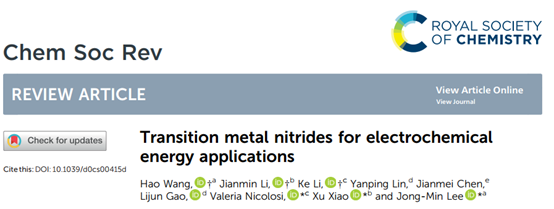
Professor Jong-Min Lee of Nanyang Technological University in Singapore and Professor Xiao Xu of University of Electronic Science and Technology of China published a review article entitled Transition metal nitrides for electrochemical energy applications in the top international review journal Chem Soc Rev, summarizing the transition metal nitride-based nanomaterials. The latest research progress of materials mainly focuses on geometric structure design, electronic structure engineering and applications in electrochemical energy conversion and storage, including electrocatalysis, supercapacitors and rechargeable batteries. Finally, the future research directions of transition metal nitride-based nanomaterials are prospected:
For energy storage applications: 1) The stable voltage window of supercapacitors is not only determined by the intrinsic properties of transition metal nitrides, but also by the electrolyte used. Compared with the most commonly used aqueous electrolytes, ionic liquids or Organic electrolytes can provide higher output voltages, resulting in higher energy density; 2) transition metal nitrides are currently the most widely used in lithium-ion batteries, but limited by limited lithium resources, they cannot achieve practically large Scale power usage needs. The application of transition metal nitrides in more abundant and cheaper sodium-potassium ion batteries is still in its infancy. 3) The high electrical conductivity and catalytic activity of transition metal nitrides can facilitate the redox reaction kinetics when capturing lithium polysulfide and dissolving Li2S2/Li2S. However, the detailed catalytic mechanism is not yet fully understood and needs to be further explored. 4) From the perspective of chemical composition, the current research mainly focuses on the composite of transition metal nitrides with inorganic substances, carbon, etc., and almost no organic substances are introduced. Considering the diversity and versatility of organics, the complexation of transition metal nitrides with organics may inspire new ideas.

Prof. Husam N. Alshareef from King Abdullah University of Science and Technology in Saudi Arabia published a review article titled MXene Printing and Patterned Coating for Device Applications in the international top academic journal Advanced Materials, which systematically summarizes MXenes through printing/coating methods, And applications in different fields, and the future development direction of graphical MXenes is prospected. At this early stage of development, only a few printing and coating methods have been used to deposit and coat MXenes. Despite the outstanding performance of some of the reported devices, more research emphasis should be placed on the transition from laboratory studies to large-scale applications in practical applications. Ultimately, researchers will need to conduct a detailed study of the inks used to optimize the printing/coating process. Looking to the future, improvements in the ability to print fine structures will greatly improve device performance, lower production costs, and ease of integration, which in turn will facilitate the miniaturization of MXene-based devices.

Professor Maowen Xu of Southwest University published a review article on the internationally renowned academic journal Advanced Energy Materials: MXenes for Non-Lithium-Ion (Na, K, Ca, Mg, and Al) Batteries and Supercapacitors, which systematically summarizes MXenes in non-lithium Synthesis, structure, properties and applications in ion energy storage technology, and prospects for future development directions:
i) Find out the limiting factors and shortcomings of the large-scale preparation of MAX phase materials and MXene materials, reduce the synthesis cost, explore the key factors affecting the synthesis process, and explore novel environmentally friendly etching methods.
ii) Explore the reaction mechanism between MXene nanosheets and different solvents to improve the stability of MXene dispersions in water and organic solvents, such as adding antioxidants and other strategies.
iii) Investigate the effect of MXene surface chemistry on performance.
iv) Deepen the computational power of theoretical simulations to design more potential MAX and MXene phase materials through theoretical simulations.
v) Development and application of MXene-based solid-state secondary batteries.
vi) Through rational structural design, the structural advantages of MXene can be fully utilized to improve its volume capacity
vii) Development of flexible and transparent MXene films for future wearable electronics.
viii) MXene-based hybrid supercapacitors, which have both high power density and energy density, have high practical value.

Professor Jilei Liu of Hunan University published a review article titled: The Role of Cation Vacancies in Electrode Materials for Enhanced Electrochemical Energy Storage: Synthesis, Advanced Characterization and Fundamentals in the internationally renowned academic journal Advanced Energy Materials, which systematically summarized the electrochemistry of cationic vacancies. Recent advances in energy storage materials, including corresponding synthesis methods and characterization techniques, and positioning their roles in practical applications from the perspective of chemical materials, key challenges and opportunities for future development, especially cation-deficient transition metal oxides and emerging transition metal carbides (MXenes). Numerous effective strategies can be used to promote the formation of cationic defects, adjust the concentration of vacancies, including variable valence cation/anion doping, maintain equilibrium in solutions with different pH values, selectively remove cations from constituents, and in defect-induced Atmosphere annealing and plasma etching. Future research directions are mainly reflected in the following aspects:
i) Quantitative determination of cation vacancies and their spatial distribution, especially in highly disordered nanostructures, remains challenging.
ii) Defect structures are generally metastable, therefore, cationic defect materials (especially those nanostructured materials with large specific surface area and porosity) usually suffer from physicochemical instability problems.
iii) To accurately understand the role of cationic vacancies, we need to exclude other factors that affect the performance of metal oxides/carbides.
iv) Although the presence of cationic vacancies leads to enhanced storage charge capacity and rate, the role of cationic vacancies in metal oxides/carbides to improve their energy storage performance remains unclear.
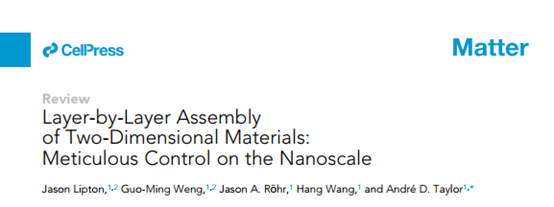
Professor Andre′ D. Taylor of New York University, USA, published a review article titled Layer-by-Layer Assembly of Two-Dimensional Materials: Meticulous Control on the Nanoscale in the internationally renowned academic journal Matter. The layer-by-layer assembly technology provides a unique and universal In this way, the special properties of 2D materials can be displayed on macroscopic devices, and new 2D material-based functional composites can be innovatively designed. Most importantly, the layer-by-layer assembly technique can achieve the effect of simultaneously controlling the thickness and layered structure of the 2D material, thereby enabling the material to achieve the best performance advantages in many application fields. The unique properties of graphene-based materials, MXenes, and TMDs, as well as their strong zeta-potentials and easy dispersion in water, make them the best candidates for layer-by-layer assembly techniques. The composites prepared by this assembly technique have greatly improved performance compared to their counterparts that are not assembled layer-by-layer, thanks to the control of interfacial contact and thickness at the nanoscale, preventing 2D materials the stacking problem. Through the layer-by-layer assembly of 2D materials, multiple possibilities can be exploited to expand what we already know about high-performance materials. In principle, scaling up MXene and TMD composite systems with compositional diversity is crucial and is the focus of future research directions. The future of layer-by-layer assembly is very promising as researchers continue to expand the development of new and unique families of 2D materials with layered structures.

Professor Song Li from University of Science and Technology of China and Dr. Shuangming Chen published a review article entitled Tuning 2DMXenes by Surface Controlling and Interlayer Engineering: Methods, Properties, and Synchrotron Radiation Characterizations in the internationally renowned academic journal Advanced Functional Materials, which comprehensively and systematically summarized the MXenes-based nanomaterials in surface control, interlayer engineering and characterization based on synchrotron X-ray absorption. Although the surface functional groups and interlayer engineering of MXenes have important effects on their structures and applications, studies on the effects of individual functional groups are usually limited to theoretical calculations. Therefore, novel synthetic methods and subsequent processing methods are still required to prepare MXenes with specific surface functional groups. Researchers need to work harder to achieve selective intercalation through specific intercalating agents to improve performance. On the other hand, the design of MXene-based composites with outstanding properties is also crucial for their breakthroughs in various fields. It is worth noting that, benefiting from the development of SR light sources and the need for in-depth research on the structure and mechanism of MXenes in corresponding fields, many SR-based characterization methods other than XAS need to be developed to explore and develop MXenes materials, such as SXRD, SXPS, XR-based FTIR and APXPS technologies and more.

Professor Zhang Han from Shenzhen University published a review article entitled MXene/Polymer Membranes: Synthesis, Properties, and Emerging Applications in the internationally renowned academic journal Chemistry of Materials. The review first discusses the synthesis methods and properties of 2D MXenes, which can be used as MXenes /Polymer composite membrane precursor. Secondly, the assembly strategies and properties of the MXene/Polymer composite films are summarized. In addition, the applications of MXene/Polymer composite membranes, such as filtration, electromagnetic shielding, supercapacitors, sensors, etc., are also summarized. The properties of MXene/Polymer composite membranes are strongly related to the distribution of MXene nanosheets. It has been reported that MXene may aggregate during the synthesis of MXene/Polymer composite membranes, resulting in multiscale phase separation. Therefore, research needs to focus on improving the dispersibility of MXene nanosheets in the polymer matrix, which can be achieved by appropriate functionalization of the polymer chains to achieve enhanced MXene nanosheet-polymer contact.
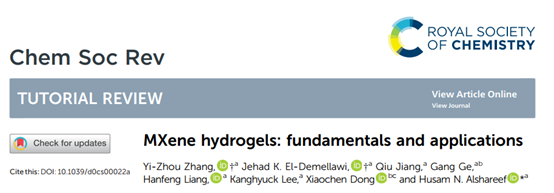
Professor Husam N. Alshareef from King Abdullah University of Science and Technology in Saudi Arabia published a review article titled: MXene hydrogels: fundamentals and applications in the top international review journal Chem Soc Rev, summarizing the different structures of various MXene-based hydrogel systems, As well as the gelation mechanism and the corresponding driving force. In principle, similar to other hydrogels, the gelation of MXene-based hydrogels involves both covalent and non-covalent cross-linking; due to the lack of studies on fundamental issues such as MXene nanosheets and hydrogel systems The mass/charge transport between other components in MXene, the kinetics/thermodynamics of the assembly process, and the mechanism of the interaction between the components; the existing devices based on MXene hydrogels are all artificially fabricated and remain experimental At the laboratory level, it is difficult to replicate or mass produce, which is also the direction that researchers need to focus on in the future.
The 3rd International Symposium on Transition Metal Carbides (MXenes), hosted by Prof. Qing Huang and Prof. Yury Gogotsi, was successfully held in Ningbo Institute of Materials Science, Chinese Academy of Sciences. The direction of MXene development in the next ten years is prospected.
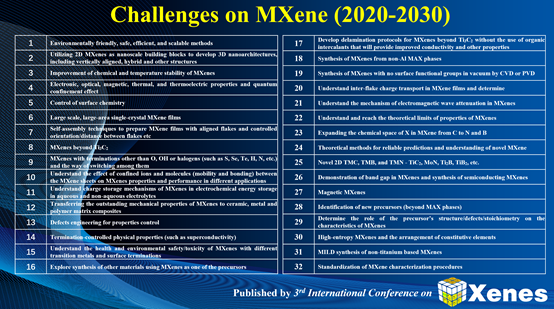

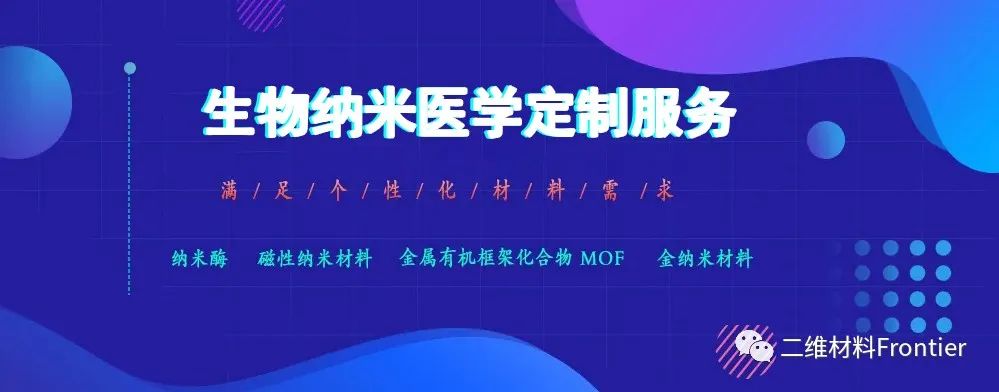
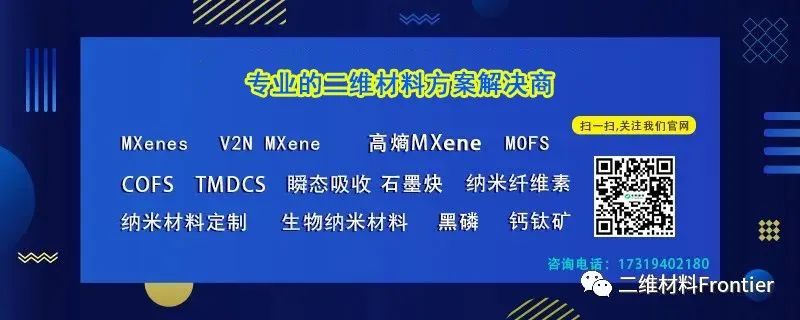

| Reminder: Beijing Beike New Material Technology Co., Ltd. supplies products only for scientific research, not for humans |
| All rights reserved © 2019 beijing beike new material Technology Co., Ltd 京ICP备16054715-2号 |